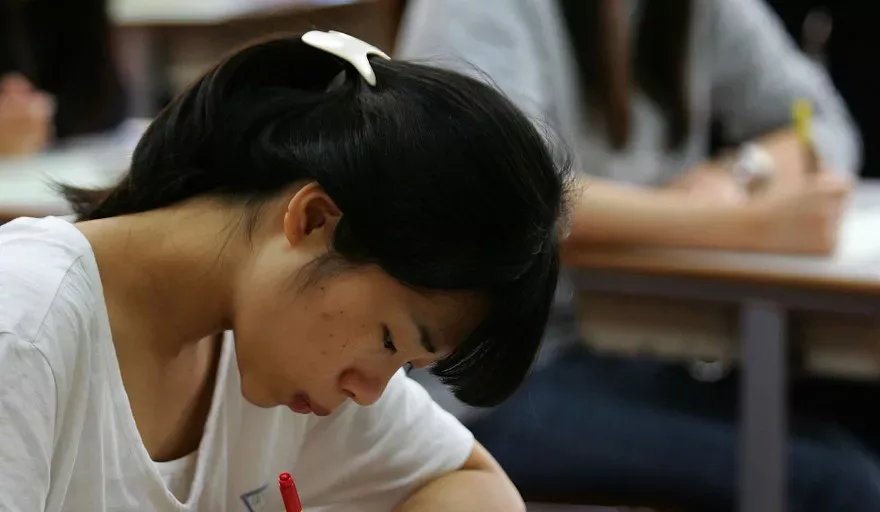With a population of about 50 million and GDP in the range of US$1.19 trillion as of 2013, APAC Outlook Magazine takes a deep dive into the investment potential of South Korea.
With a population of about 50 million and GDP in the range of US$1.19 trillion as of 2013, Korea has a huge market. Its GDP per capita is $23,837, and the population has very strong purchasing power. In fact, the high-end Korean market is recognized as the global trend-setter. Its response to new products affects many companies’ marketing strategies for not only China, Japan and ASEAN member nations, but also for Europe and other parts of the world.
Northeast Asia has now become one of the three global economic powerhouses, along with the United States and Europe. Geographically, Korea is situated at the centre of air and maritime transportation networks in Northeast Asia. There are 51 cities with a population of more than 1 million within a 3-hour flight from Seoul. Also, Korea, Japan and China boast a combined GDP of about $15 trillion. Their total population exceeds 1.53 billion, or 22% of the global population, and their trade volume is $6.6187 trillion, or 18% of total world trade.
THE ROAD TO RECOVERY
Just 60 years ago, Korea was a country devastated by war and poverty. The elements that have made Korea a key player in the international economy include aid from the international community, Koreans devotion to work, the steady efforts of successive governments to open up its economy and corporate efforts to innovate and enhance their international competitiveness. Between 1970 and 2013, Koreans GDP grew by more than 147 times, from $8.1 billion to $1.1975 trillion. Between 1961 and 2013, Koreans GDP per capita grew by more than 290 times, from $82 to $23,837. So far this millennium, from 2000 to 2012, Korea has achieved an average annual economic growth rate of approximately 2.5% and maintained strong economic vibrancy.
The Seoul Summer Olympic Games in 1988 helped Korea become known worldwide. In 2002, Korea co-hosted the World Cup with Japan. And in 2018, Korea will play host to the Winter Olympics. All of these are indications that Korea has emerged as an important player in the international community. Korea also held the 2010 G-20 Summit in November of 2010, leading discourse about global political and economic issues. In the same year, Korea joined the OECD DAC (Development Assistance Committee), becoming the first country to go from being a foreign aid recipient to an aid donor.
TRADING AND NEIGHBOURING MARKETS
Korea has signed free trade agreements with the EU and the U.S., and they went into effect in 2011 and 2012, respectively. As of 2014, Korea has signed FTAs with 49 countries including ASEAN, the European Free Trade Association (EFTA), India and Peru, while FTA negotiations between Korea and China are underway. The economies of the countries with which Korea has signed FTAs account for 61% of the total global economy and are home to 36.2% of the world’s population.
Northeast Asia has now become one of the three global economic pillars, along with the United States and Europe. Geographically, Korea is situated at the centre of air and maritime transportation networks in Northeast Asia. There are 51 cities with a population of more than 1 million within a 3-hour flight from Seoul. Also, Korea, Japan and China boast a combined GDP of about $15 trillion. Their total population exceeds 1.53 billion, or 22% of the global population, and their trade volume is $6.6187 trillion, or 18% of total world trade.
A SMART EDUCATION SYSTEM
Koreans are famous for their passion for education. Korea’s illiteracy rate was 2.1% as of 2013. Every year, approximately 470,000 college graduates join the workforce. In 2013, Korea’s college entrance rate was 70.7%, the highest in the OECD. The country’s college graduation rate in the 25-34 age group is 65%. Such a strong passion for education in a stable educational system explains Korea’s continuous supply of high-quality human resources, which in turn enhance the competitiveness of companies and help them constantly innovate.
As of 2013, the number of Korean students overseas stood at 227,126. The Korean student communities in the U.S.A., China and Japan are among the largest in those countries. Koreans engaged in lifelong education are estimated at 18 million. Most notably, 42.1% of the workforce work and study at the same time to obtain certificates, study a foreign language, earn an MBA or other master’s degree and for other varied reasons.
Koreans are diligent and faithful to their work. Their average annual working hours as of 2012 were 2,090, the highest among OECD countries. The labour productivity index is also steadily on the rise. Setting the index of the year 2010 as 100.0, the index recorded 103.5 in 2012. It was 54.2 in the year 2000.
TECHNOLOGICAL INNOVATION
Enterprises and Society Pursuing Innovation According to Cologne Institute for Economic Research, Korea ranks third in terms of technological innovation, after Finland and Switzerland. Such an innovation-oriented social and corporate atmosphere leads to attractive results for the foreign companies in Korea.
According to a report by WIPO (World Intellectual Property Organization), the number of Korea’s PCT (Patent Cooperation Treaty) applications in 2012 is 11,848, or 6.1% of the cases in the world (194,400). Korea ranked fifth in terms of PCT applications after the USA, Japan, Germany and China.
Of the top seven countries that invest heavily in R&D, Korea is number two in terms of the ratio of R&D investment to GDP. Because of Korea’s favourable conditions for R&D, a number of global companies have set up their R&D centres here. Such centres include the Microsoft Mobile Innovation Lab, IBM Ubiquitous Computing Laboratory, Google Engineering R&D Centre, Kimberly-Clark Innovation Centre Asia, Siemens Medical Research & Development Centre, Dupont Nano R&D Centre and Institut Pasteur Korea, a world-famous biotech research institute that opened in Korea in 2004 and has been very active in R&D.
COMPANY POWERHOUSES
Korea has a number of global companies in various industries including the electricity and electronics, automobile, chemical, steel-making, shipbuilding and IT industries. Samsung Electronics, LG Electronics, Hyundai Motor Company, Kia Motors, POSCO and SK Telecom are a few of Korea’s world-famous companies.
TRANSPORT AND ECONOMY
The international competitiveness of Korea’s logistics infrastructure is showing continuous improvement. According to an evaluation of global airports’ services conducted by the Airports Council International, Incheon International Airport has been ranked the best airport in the world for nine consecutive years. Its fast and meticulous cargo-handling system and simplified customs clearance process help make it the best airport in the world.
As a peninsula country, Korea has a number of modern sea ports including Busan, Incheon, Gwangyang, Pyeongtaek/Dangjin, Daesan, Gunsan, Mokpo, Jeju, Masan and Ulsan. The port of Busan, the largest in Korea, lies on a major global shipping route linking Korea to North America, Asia, the Middle East, Europe and Latin America. As of 2012, Busan was the fifth largest container port in the world, with a handling volume of about 17.04 million TEUs (Twenty-foot Equivalent Unit) per year.
Korea is a well-connected country in terms of railways and road networks. The Korea Train Express, or KTX, is the world’s fifth bullet train system and can reach the farthest point in the country within three hours. KTX has increased Korea’s passenger transportation capacity by 340% and its cargo transportation capacity by 770%. Besides KTX, Korea has 37 highways and well-maintained national and regional roads running across the country.
Korea’s electricity supply is well known for being highly affordable and stable, and citizen satisfaction with city gas is very high. The supply of industrial water and potable water is highly stable as well. Plus Korea’s high connectivity ensures that you can get connected within 24 hours wherever you are and whatever kind of service you need, whether it’s wired, mobile or high-speed Internet services.
HEALTH AND TOURISM
Korea’s public security is very highly regarded among the international community. It is safe to walk around at night, and there are plenty of places to shop, including department stores, discount stores, brand-name shops and traditional markets, some of which are open 24 hours a day.
Korean cities feature well-developed, cheap and convenient mass transportation. Subways are available in many metropolitan cities and buses run to almost all corners of Korea. In addition, because the fair calculation system between different carriers is well established, most cities offer the public significant transfer discounts between all types of mass transportation.
Because Korea offers world-class medical care at low prices, the number of people who come from the U.S., China and Southeast Asia, in particular, to receive medical care is rising steadily each year. Across the country, private clinics offer first-class medical services even in small towns. There are a great number of general hospitals in many cities across the country where foreigners don’t have to worry about the language barrier.
So far, 52 foreign and international schools have been established in Korea, including 26 for North American or British education, 18 for Chinese education and the rest for Japanese, Turkish, Mongolian and Norwegian education.
Korea features a well-integrated cultural life drawing on the best from Korean and Western cultures. Traditional cultural performances are available in many theatres and performance facilities. Movies, local or foreign, are popular in Korea, so there is a multitude of big screens throughout the nation. World-class musicals and operas are performed in many places, particularly in Seoul. Culturally, Korea offers a more varied and rich experience than most countries. Foreign residents engage in diverse recreational and sports activities in Korea and also join clubs, which are very common in Korea and can be found easily online, including clubs for Latin dance, musical instruments, hiking, you name it. You can also relax or bike in one of Korea’s many parks or along the rivers across the country, such as the Han River in Seoul, which is a great place to sail. Almost any hobby or sport can be enjoyed in Korea.
PROMOTING FOREIGN INVESTMENT
Invest KOREA (IK) was established as the national investment promotion agency of Korea to support the advancement of foreign companies into the country.
IK provides foreign investors with a free, one-stop consulting service encompassing initial investment counselling, determination of business sites, establishment of companies, investment reporting and investment benefits application. Its Foreign Investment Ombudsman, who is appointed by the president of Korea, works to resolve the grievances of foreign investors. By dispatching investment counsellors overseas, IK provides local companies with counselling services and the information necessary to invest in Korea.
Korea’s central government, in conjunction with its provincial and municipal governments, works consistently to overhaul regulations and systems related to foreign investment in terms of law, taxation, labour, financing and accounting, and strives to upgrade them to the level of international standards. Also, Korea seeks always to improve education, medical care and housing-related matters for foreign residents. Above all, Korea is open to the opinions of foreign chambers of commerce and foreign companies here to constantly improve the domestic foreign investment environment.
Korea offers foreign investors various incentives based on the Foreign Investment Promotion Act. They can receive tax breaks for a maximum of seven years for corporate tax and income tax, for example, and local taxes (such as acquisition tax, registration tax and property tax) for a maximum of 15 years. Korea also offers foreign investors cash grants and can also provide free land, such as plant sites, or loan it to investors at low prices.
To find out more, visit: http://www.investkorea.org/
SOURCE: Invest Korea




































